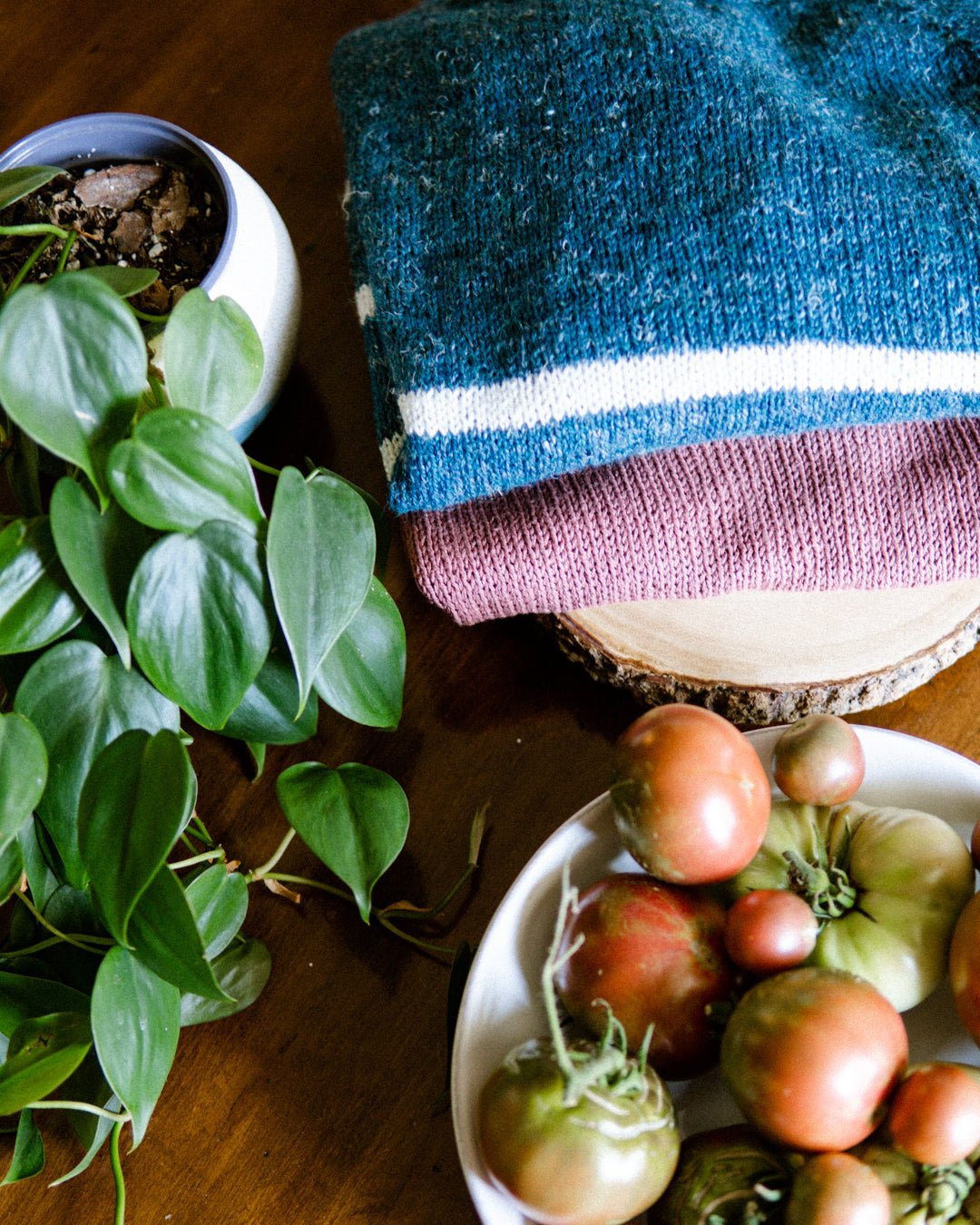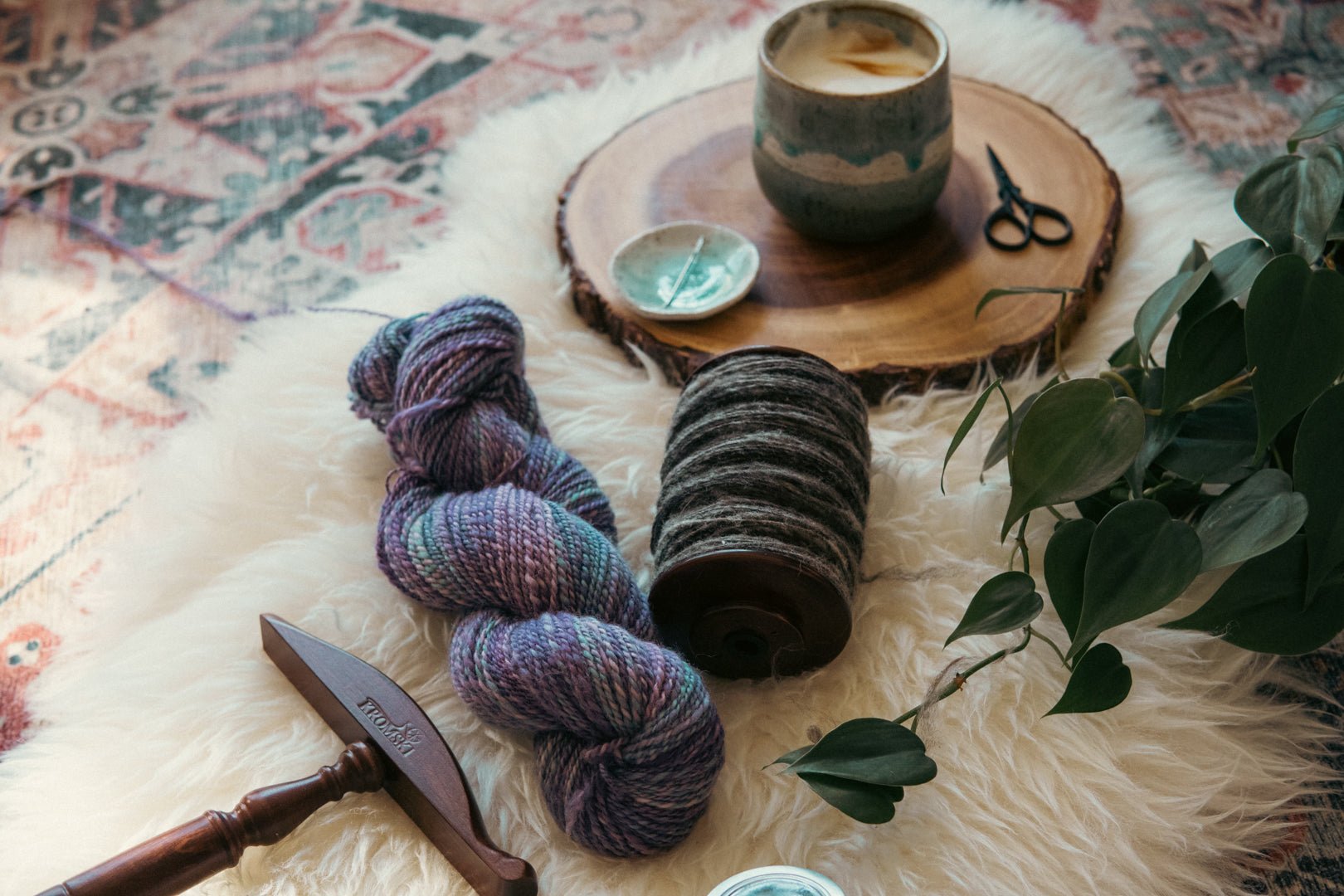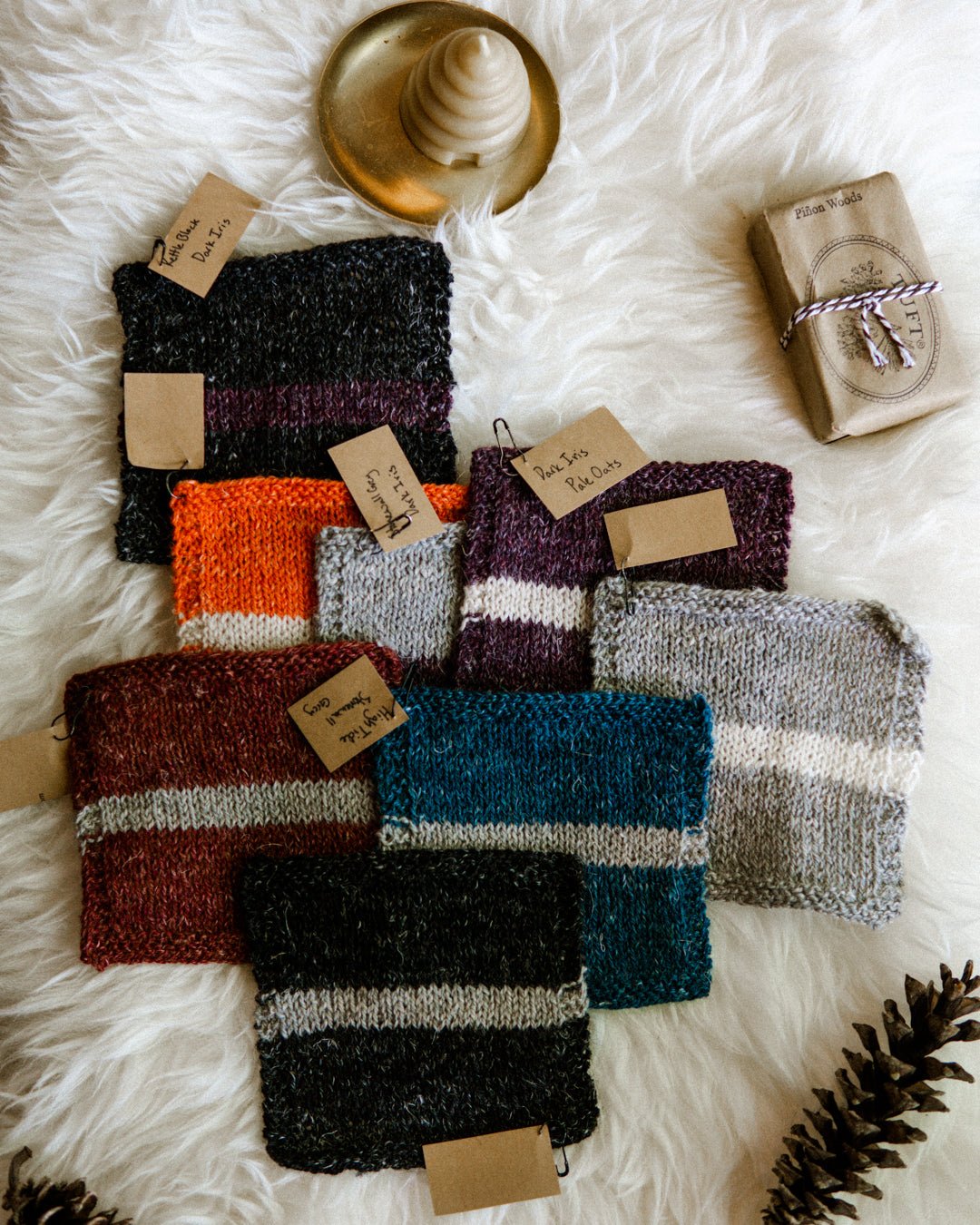
Why these yarns for the Coloring Book Tee?
One of the things I see a lot in our knitting community online is anxiety over ethical purchases. We put ourselves through “no buys” with mindsets borrowed from diet culture, periods of compulsive purchasing, and acquire stash that can often grow out of control. And while yarn purchasing is a matter that is deeply colored by financial privilege, location, and access, I think all of us could do with some deprogramming to unlearn that language of diet culture.
And by the way, I really strongly believe that you use the yarns that make sense for you, and no one should even try to make you feel bad about it, because that's really shitty and we aren't here for yarn snobbery.
Anyway, just like with diets, I don’t think deprivation culture and extreme no-buys are beneficial, especially if it leads to compulsive purchasing later. I fall into this kind of no-buy mindset a lot and then end up impulse purchasing rather than take my time and consider what will work and be used in my wardrobe.
Is this something you struggle with? If that is the case, you are so not alone. While I love working with regionally grown, single-farm, single-breed type fibers or hand-dyed yarns created by BBIMP (Black, Brown, Indigenous, & Melanated People), the reality is that I know many of my knitters in the community are not able to afford these yarns on a regular basis. But of course, the makers I’m talking about who are creating this yarn deserve to get paid fair wages too!
A conundrum.
I don’t think there’s any One Right Way to manage our yarn collections and make purchasing decisions, and I think it’s really shitty that a late capitalist society makes us choose between our budget (which is tight for so many) and making ‘ethical yarn choices.’ I think that while there’s no such thing as the perfectly ethical choice, we DO have choices that we can make that will speak to our value and budget.
For some of my patterns, I do choose to partner with tiny businesses such as dyers(often single-person owned and operated) and small farms. And on other patterns which have more of a ‘staples in the wardrobe’ type design intention in mind, I choose more reasonably priced yarns that still fit a minimum standard of animal care from companies that I think are well aligned with my values.
Anyway, all that to say… It’s OK for you to choose what yarns work for you at this moment, and not every yarn can be absolutely everything to everyone at all times. That is OK and fine and good. We are all just doing our best.
The reality is, the yarns I adore and select today might not be the same ones I adore and want to knit with this time next year. And that’s OK! Asides from creative ways to move those yarns out of our storage, such as knitting them up as gifts, gifting them to others, or selling them to others, one of the ways I try to keep things manageable is to be intentional about the projects and yarns I pair them with in the first place and purchasing for each project plan.
Anyway, I thought I’d sit down and write to you all here about particularly interesting conundrums that I go through with yarn selection in hopes that some find it helpful in their own project planning.
That brings us to the Coloring Book Tee. Why have I chosen the yarns I did for this pattern?

Linen Quill
Purl Soho’s Linen Quill was the first yarn chosen for this project, and it was chosen because of its fiber content and lovely drape. I find that it’s a little thinner than most fingering weight yarns, which means it creates a lovely and light fabric at 24 stitches over 4 inches/10 cm. It has 15% linen which gives it a breezy quality, but not so much linen that it becomes difficult to work with for my hand.
I have chronic pain, so often times choosing non-stretchy fibers based on plants and silk is not always an option for me. I had no issues working with Linen Quill, even though it is much less stretchy than its 100% wool counterparts. So if you want to try knitting with more ‘summer’ fibers but you struggle with pain with cotton or linen, try a sample of this one out!
Linen Quill's fiber content, the many beautiful colors with the linen pops that add visual texture, plus the relative affordability of the yarn means that it can easily fit into any wardrobe. It was truly such a joy to work with and I can see myself knitting many staples in my wardrobe with this yarn.

Pure Silk
The second sample, knit expertly by my sample knitter Hannah Graham, was knit from 100% silk, the Pure Silk base by Knitting For Olive. I purchased a tee quantity of this on a whim to test it out and fell in love with it on swatching. While it is much less stretchy than Linen Quill, it creates a much less ‘warm’ fabric.
If you have sensory issues with the prickliness of wool and linen, this one is much smoother and creates a fabulous drape.
While I have no problem wearing light weight wool fabrics in warm weather (indeed, some of my favorite base layer pieces for summer are ultra light wool and Tencel blend fabrics), I know this is a sticking point for many people, so I wanted to bring this option on board for those who might need a wool-free option.
The silk in Knitting For Olive’s beautiful base is harvested after the silk moths have left their cocoons which means no moths were killed in the process. The yarn is also quite affordable at 6.45 Euros per 50g ball. I really enjoyed swatching with this yarn, and I think it’s well worth the effort to get to know this yarn, especially for summer staples.
The one caveat I would say to watch out for is that this yarn is not stretchy. Like at all. So around the neckline and the hems, you may have to do some needle size experimentation depending on your personal ribbing gauge to make it work, not just in the Coloring Book Tee but on other patterns as well.
All that to say…
My biggest single recommendation for choosing yarns is to choose what works for you, in your climate, with your body, and what will spark joy. It’s ok for our values, creativity, love for beauty, and budget to co-exist, sometimes in conflict.
And it’s OK also if you are purchasing a yarn for pure utilitarian reasons because you need that finished tee in your wardrobe because it fills a gap. That is often what I end up doing in my own crafts since I’ve not bought many ready to wear clothes since my body changed over the course of giving birth to and raising two kids. And it’s OK if you have to buy ready to wear to fit a changing body.
Finally, I want to say that… I don’t want you to feel guilty or bad about your yarn purchases. Let the beauty of the things you acquire bring you joy, while trying to, in balance, make thoughtful and well-planned purchases that work for you rather than against your joy (ie. when the collection gets so large it brings you stress, or is so large you can never use it all and thus not derive the joy of knitting it, or if you are compulsive and buy things just to buy them and THAT brings you stress).
All we can do is try our best, and that little voice telling you you should feel bad for loving what you love is late stage capitalism speaking trying to make you take responsibility for all the evils in the world all by yourself.
Don’t listen to it. While we are to some degree responsible to do our best for this world and the humans in it, no one of us is solely responsible and we are all human and have needs for beauty, joy, and clothes on our body also. It’s essential to prevent climate anxiety burnout by trying to hold both of these truths at once.
I hope you find some joy in what you are making today! These decisions can be quite overwhelming but I hope that I've given you some food for thought and that these options are either within your ability to afford or give you some ideas on what to look for if you're trying to substitute the yarn for this pattern.
This blog post is supported by my Ko-fi subscription group and my pattern sales from the Coloring Book Tee.




Leave a comment
This site is protected by hCaptcha and the hCaptcha Privacy Policy and Terms of Service apply.